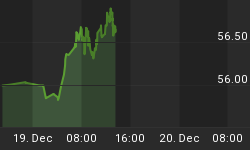One can only hope that the "Don't shoot the messenger" adage is still popular in the international community.
UK-based consultants M&C Energy Group have become the latest to join the chorus of voices asking the international community to increase the pressure on China and India to switch to cleaner energy sources.
As far as energy analyst David Hunter is concerned, it is the Western businesses that are carrying the financial burden of reducing carbon emissions. China and India, on the other hand, are benefitting from much cheaper energy, and their companies don't have to bear the costs of reversing the effects of global warming.
Mr Hunter, however, should steel himself for disappointing news. Industry experts are expecting anything but a cut in coal demand for the foreseeable future.
By their analysis, global coal demand - already at a record high - will remain strong even as the recession cuts down on oil and gas use. And the numbers are certainly matching up to these expectations.
India's coal demand is expected to reach 653 million tonnes this fiscal year, with only 572 million tonnes expected to be produced in the country. The China National Coal Association expects demand to grow by 4-6% in 2010 and the coal consumption to expand to roughly 3.4 billion tonnes.
And with power-starved economies to feed and millions of people to lift out of poverty, neither country is going to take kindly to any interference with its energy agenda.
There are two different types of coal - in fact two different types of demand - when it comes to the coal market. Though they can't be considered to be totally separate, the criticism levied against these two Asian tigers becomes somewhat blunted when we take this angle.
The first is for thermal coal, the cheapest and most popular way for emerging economies to produce electricity. Almost 75% of China's electricity comes from coal-fired plants, but this picture is rapidly changing.
Irritated by the "world's biggest energy consumer" sticker, Beijing is investing heavily - US$736 billion - into clean energy investment plans. The aim: increase the non-fossil fuel supply component to 15% of the total primary energy demand by 2020. So really, Mr Hunter's desire for a less coal-intensive China might just come true. As for India, it never likes to be too far behind its Asian rival.
The second demand is for metallurgical, or coking, coal. This is what China and India really need - good-quality metallurgical coal, something that North America has in plenty. And this demand is not going away anytime soon.
For a strong economy, one needs strong infrastructure. For strong infrastructure, one needs steel. Steel is the backbone of an economy, and it is metallurgical coal that is used to produce the heat in 90% of the world's steel production process. And for as long as the economy continues to blaze, it is metallurgical coal imports that will be stoking the furnace.
The heyday of the coal market is far from over. We've called coal the invisible bull market before; today it's very much at the forefront of the market, and it isn't going away. Coal suppliers know as well which side their bread is buttered. While traditional markets in Europe continue to struggle with their debt crises, China and India will be only too happy to race on ahead and pick up the slack.
No one knows energy better than Marin Katusa, Casey's chief energy strategist and senior editor of Casey's Energy Report. One of his previous coal picks jumped by 80%, handing subscribers handsome profits. Who will be the coal winner in 2011? Find out with a risk-free, 3-month trial with 100% money-back guarantee.















